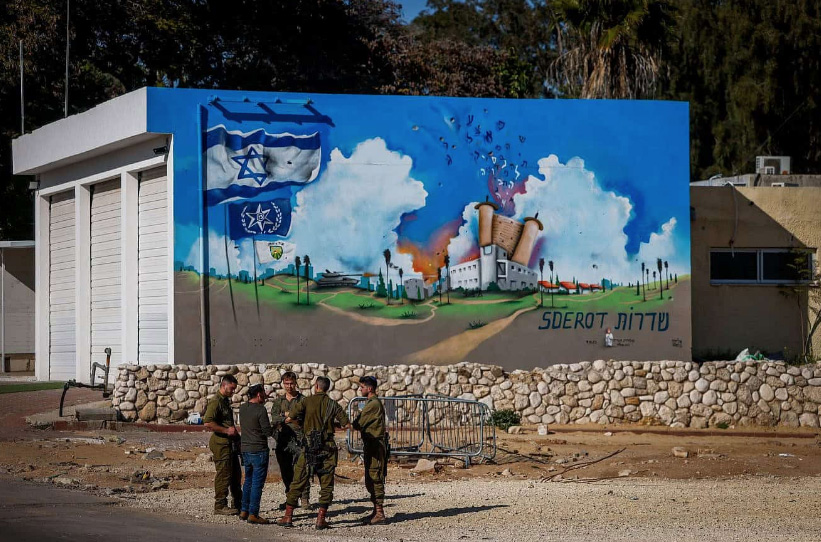Courtesy of JNS. Photo credit: Chaim Goldberg/Flash90
Israeli soldiers stand near graffiti at the site of the old police station in the southern Israeli city of Sderot, which was attacked on Oct. 7 by Hamas terrorists, March 11, 2024
(JNS) — A year after the Oct. 7 Hamas onslaught, a report by Israel’s Tekuma Administration — the Israeli government’s arm for rehabilitating the Gaza periphery — reveals significant progress in resettling and rebuilding the affected communities.
Released on Tuesday, the report shows that 87% of residents have returned to their homes, with efforts continuing to address housing, security and economic challenges.
On the eve of the attack, 63,978 residents were living in communities adjacent to Gaza. Of these, 49,449 people have returned, while 12,708 remain in temporary housing solutions. The report details 244 projects initiated, totaling $1.7 billion — 90% of the annual Tekuma budget.
Temporary housing solutions fall into three categories: urban, integrated and rural. Each project addresses security, community rehabilitation, construction, infrastructure, economic development and heritage preservation.
The Tekuma Administration has invested significantly in security infrastructure upgrades, including the establishment of a centralized operations center to coordinate defense activities and implement comprehensive security measures for residents in the region.
This arm of Tekuma, working on behalf of the Defense Ministry, coordinates IDF activities in the region and implements security measures for residents.
A pilot program to enhance community security response is underway in five communities closest to the Gaza border, testing new technological components such as observation devices, drones and a dedicated civilian communication network. This program is expected to expand to more towns in the region.
The administration documented extensive damage through 3D mapping of physical infrastructure in most Tekuma communities and public areas. An architectural preservation survey was also conducted, creating a community documentation file and a survey of historic buildings.
Looking ahead, the administration plans to promote legislation defining the region as a “national focus area,” outlining its authorities and budgets. Additionally, it will seek a complementary government decision for development components in the 2025-2028 strategic plan, totaling $1.3 billion.
Several regulatory easements have been implemented to streamline reconstruction efforts, including exemptions from certain permits and plans.





